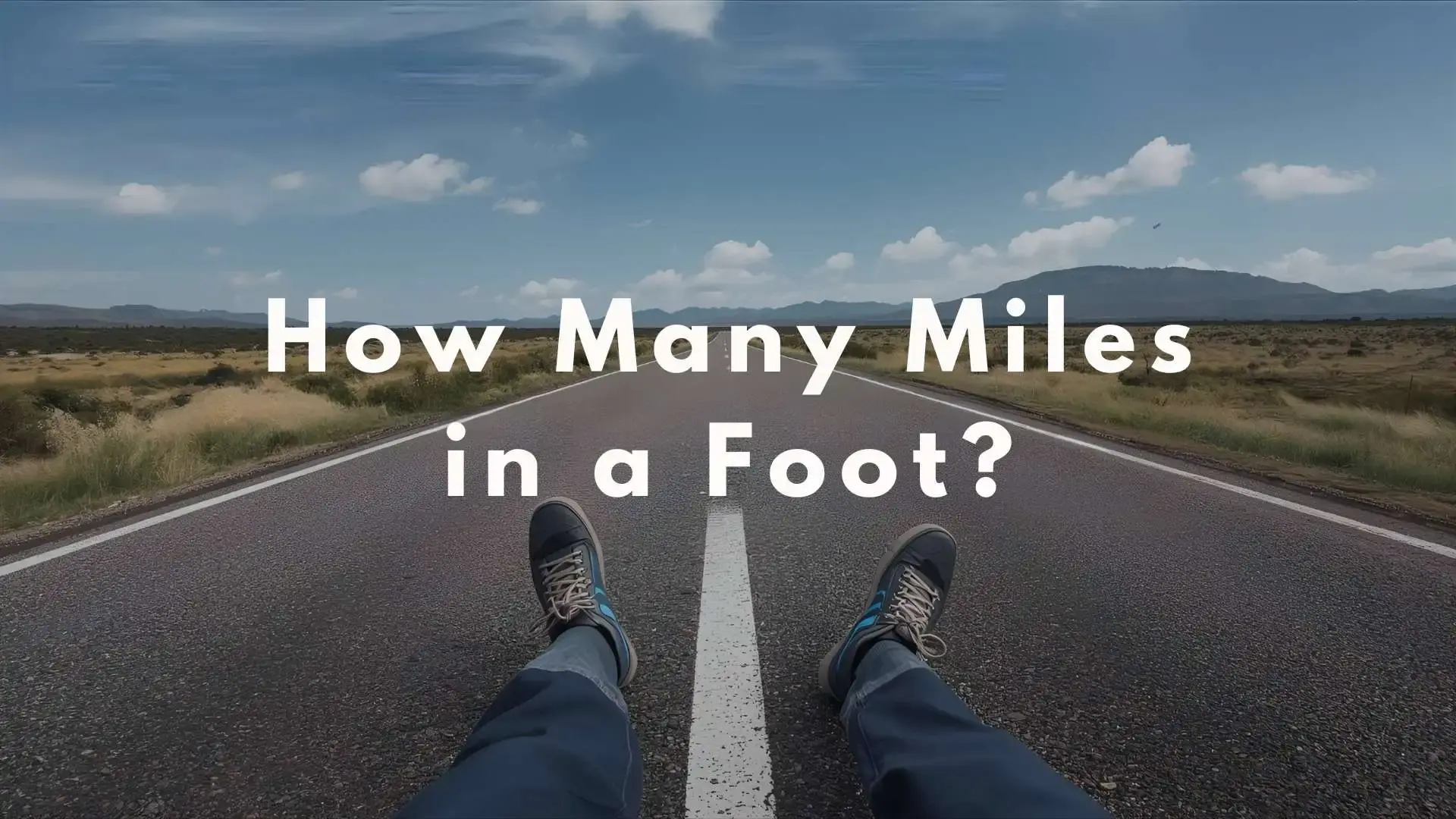If you’ve ever asked yourself “how many miles are in a foot?” you’re not alone.
Just like when cooking and measuring ingredients, knowing how to convert feet into miles (or the other way around) helps you solve real-world problems.
From road distances to track lengths, unit conversions make life easier—and once you know the trick, you’ll never forget it.
This guide breaks down the exact conversion between feet and miles, shows you simple ways to remember it, and gives real-life examples where this knowledge comes in handy.
🧩 Understanding the Units | Foot vs. Mile

Before we convert, let’s get clear on the two units:
- Foot (ft): A basic unit of length in the U.S. customary system, commonly used for measuring short distances (like room sizes or human height).
- Mile (mi): A much larger unit of length, used to measure longer distances such as roads, runs, or city-to-city travel.
Both are part of the imperial system, which is still used widely in the U.S. and a few other countries.
✅ Quick Answer | How Many Miles in a Foot?
👉 1 foot = 0.000189394 miles
In simple words, a single foot is only a tiny fraction of a mile. Since 1 mile equals 5,280 feet, it takes thousands of feet to make just one mile.
📊 Conversion Chart | Feet to Miles
Here’s a quick reference table:
| Feet (ft) | Miles (mi) |
| 1 ft | 0.000189 mi |
| 10 ft | 0.00189 mi |
| 100 ft | 0.0189 mi |
| 1,000 ft | 0.189 mi |
| 5,280 ft | 1 mi |
🎯 Why This Conversion Matters in Real Life
Understanding this conversion is surprisingly practical:
- Travel & Running → Converting track lengths into miles for training.
- Construction & Land Measurement → Surveyors often switch between feet and miles.
- Everyday Curiosity → Want to know how many feet your morning walk covers in miles? This helps.
- Education → Students regularly face this conversion in math and physics problems.
🧠 Easy Tricks to Remember the Conversion

Here are two mnemonics:
- “5 tomatoes” → 5-2-8-0 → Remember that 1 mile = 5,280 feet.
- Think of a mile as a giant ladder with 5,280 little steps (feet) to climb.
Once you know 1 mile = 5,280 feet, you can always flip it:
1 foot = 1 ÷ 5,280 miles ≈ 0.000189 miles.
⚠️ Common Mistakes to Avoid
- Mixing up feet with yards → 1 yard = 3 feet, not 1 foot.
- Rounding too much → For precise work (like surveying), always use the exact decimal.
- Thinking 1 foot is “close” to a mile → It’s not; a foot is tiny compared to a mile.
🔄 Measurement Differences
Unlike temperature or weight, the relationship between miles and feet never changes:
- 1 mile always equals 5,280 feet.
- 1 foot always equals 0.000189 miles.
No matter where you are, this conversion is fixed.
🏡 Real Life Examples

- Running Track: A 400-meter track is ~1,312 feet, which equals about 0.25 miles.
- City Block: Some U.S. city blocks are ~528 feet, or roughly 0.1 mile.
- Hiking Trails: A 10,560-foot hike = exactly 2 miles.
❓ FAQ: How Many Miles in a Foot
Q1: How many miles are in 1 foot?
A: About 0.000189 miles.
Q2: How many feet are in 1 mile?
A: Exactly 5,280 feet.
Q3: Why is 1 mile = 5,280 feet?
A: It comes from historical English units based on furlongs and rods.
Q4: Can I convert feet to miles without a calculator?
A: Yes—just divide feet by 5,280.
Q5: Is the conversion the same worldwide?
A: Yes. Unlike gallons or pints, a mile and a foot are standardized globally.
Q6: How many miles is 10,000 feet?
A: 10,000 ÷ 5,280 = about 1.89 miles.
🏁 Conclusion
So, the answer is clear: 1 foot = 0.000189 miles, and 1 mile = 5,280 feet.
It’s a small but useful conversion that pops up in math, travel, construction, and everyday life. Next time someone asks, just remember the “5 tomatoes” trick—5,280 feet in a mile.

Thomas Gray is a seasoned writer and researcher with a passion for uncovering the layers of language, culture, and human expression. With years of experience in content creation and linguistic exploration, he brings clarity and depth to complex subjects, making them accessible and engaging for readers worldwide. His work often blends academic rigor with a storyteller’s voice, earning him recognition in both digital and print publishing circles.
Thomas has contributed extensively to educational platforms, language-focused blogs, and international publications. His keen eye for detail and commitment to accuracy make him a trusted voice in the fields of linguistics, history, and cultural studies.
He is the author of several professional works, including “The Language Atlas“, “Global Words: A Linguistic Journey Across Cultures“, and “Meaning in Translation: Bridging Words and Worlds.”




